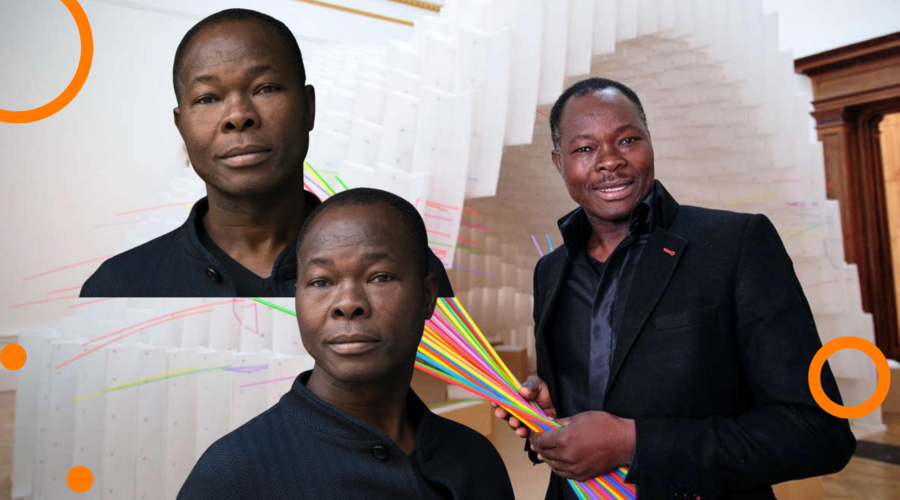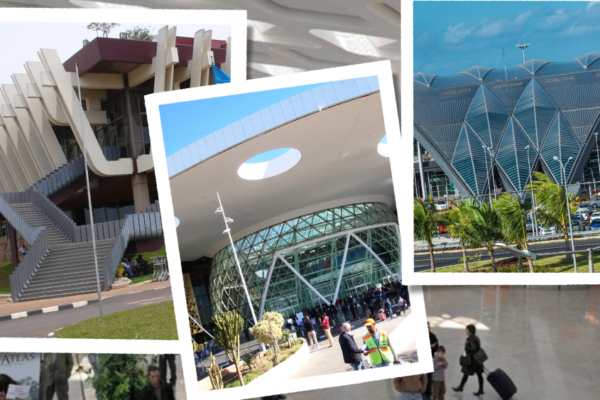Diébédo Francis Kéré was born on 10th April 1965 in Gando, Burkina Faso. He is an architect who is known for designing African-inspired creative works that defy geometry. He founded the Kéré Foundation, initially called Schulbausteine für Gando and later Kéré Architecture in 2005. His architectural work has received international recognition. He is the recipient of the Aga Khan Award for Architecture (2004) for designing the Gando Primary School in Burkina Faso and the Global Holcim Award for Sustainable Construction 2012. In 2022, he was honoured with the Pritzker award, making him the first African and Black person to receive it.
Also, read: African Infrastructural Projects You Can’t Get Enough Of
His works are great examples of contemporary architecture that stands between idealism and realism with an afro-futurist vision.
Inspired by tradition, his designs are beyond most of the existing modern architecture. Let’s take a look at some of his outstanding works.
Startup Lions Campus: A unique blend of nature and tech by Francis Kéré
Situated on the banks of Lake Turkana, the Startup Lions Campus addresses the region’s problem of youth unemployment by giving exceptional expertise and international employment prospects for budding entrepreneurs.
The architecture intensifies the site’s distinctive morphology and natural beauty. The campus stands on two levels that match the land’s natural slope. It also has enormous roof terraces with panoramic views of Lake Turkana.
The creeping flora shroud the roof decks and provide attractive outdoor gathering spaces and chances for casual intellectual talks.
The architecture was inspired by the soaring dunes created by termite groups in the area. High ventilation shafts provide a stack effect and pull warm air upwards, introducing fresh air through specifically engineered low-level vents to cool the primary working spaces passively.
The campus is made of locally mined quarry stone that has been plastered. Environmental sustainability, cost, and availability concerns were considered while deciding which materials and construction techniques to use. In the making of this project, collaborating with the local community and tapping on their experience and skills was critical.
Benga Riverside School
The Benga Riverside School, located on the banks of the Revboé and Zambezi rivers, serves as an educational facility for the Benga Riverside Residential Community.
There were two halves of the project. The nursery and primary school finished in 2018, while the senior school is still in the works.
A grassy welcoming zone with a school bus stop is located at the entry. Thus it prevents the surrounding road from disturbing the youngsters. The complex begins with administrative buildings, which provide additional protection for the youngsters.
The panels resemble a fish’s gills, allowing visitors to look inside the classrooms. Therefore, generating a culture of openness and confidence. The other side of the compound, which follows the nursery school, has a panoramic view of the valley. The elementary school classrooms, food court, as well as sports facilities.
The scenography for Racism: A cleaver depiction of racism by Francis Kéré
The Invention of Human Races exhibition at Dresden’s Deutsches Hygiene-Museum reflects numerous topics and emphasises the meaning and context of the works and items on display.
The visitor comes across four chapters, beginning with an analysis of the non-scientific reasoning that underpins the social construct of “race.” A massive wooden modular construction creates a rigorous geometric order in a dimly lit room, recalling the established progressive classification system. It features a variety of mediums that help to spread those ideas today. Around the same time, each area allows dissenting voices to speak about historical and current racial ideas.
The adjacent room’s austere and colossal mood related to the prevalent ideals of National Socialism when the Deutsches Hygiene-Museum served as a propaganda factory. The surface coating, which resembles the impression of pure concrete, emphasises the museum walls’ strong presence.
The next chamber, with its austere vitrines, examines colonialism’s dominant politics of systemic racism and structural exploitation, as well as its long-term ramifications, such as recent refugee movements.
The architecture of the last room is based on a West African arbre à palabres to inspire visitors to talk about today’s institutional racism. The roof of the project made use of cardboard tubes. Therefore. it resembles a rectangular canopy of a tree beneath which people gather and converse. The tubes, that heavily resemble Shigeru Ban’s paintings, are a symbol for society’s fleeting nature. They represent how fragile it might be to live in a community without a shared set of fundamental principles and reciprocal understanding.
Colorscape
Colorscape’s creation is a part of the Creative Africa series to accompany Francis Kéré: Building for Community, a monographic exhibition. It demonstrates how combining simple materials can result in a unique construction. The project consists of a locally obtained lightweight chain made of interlaced strands. This project takes inspiration from Philadelphia’s rich legacy of fabrics and woven crafts. The colourful cable is wound around prefabricated steel components and draped from the top of the Perelman atrium area. It forms a vast volume and a uniting feature that encompasses the guests.
The artwork helps us understand the context of community-building methods in Western Africa. It was so that it could be constructed by people with no prior construction expertise. Wiring the requirements needed no tools or challenging skills, allowing youngsters to assist in the assembling process.
A combination of organic and rectilinear geometries helped to create The project’s architectural interpretation. The contrasting layouts of a typical small Burkinabè town and a major North American city inspired this layout.
Apart from his marvellous projects, Francis Kéré is a lecturer at the Technical University of Berlin and the University of Wisconsin. He was also a visiting professor at Harvard. Kéré currently splits his time between Berlin and Burkina Faso. Francis Kéré winning the award marks a delayed but rising acknowledgement of the relevance of African architecture. Most importantly, it gives a voice to contemporary African art.
Also, read 10 Must-Have African Decor.




